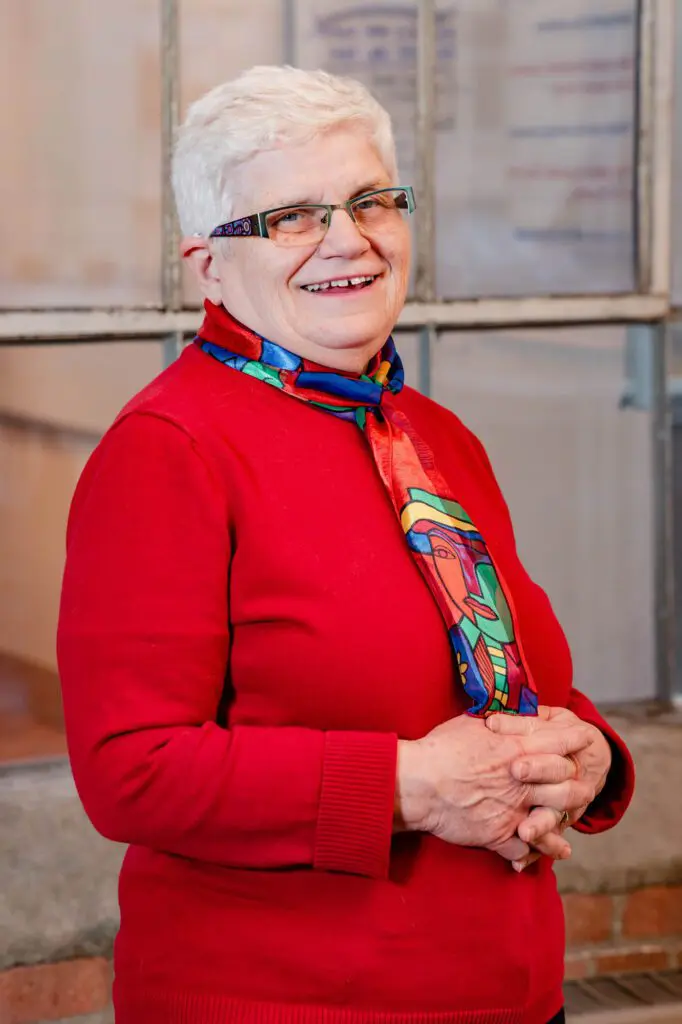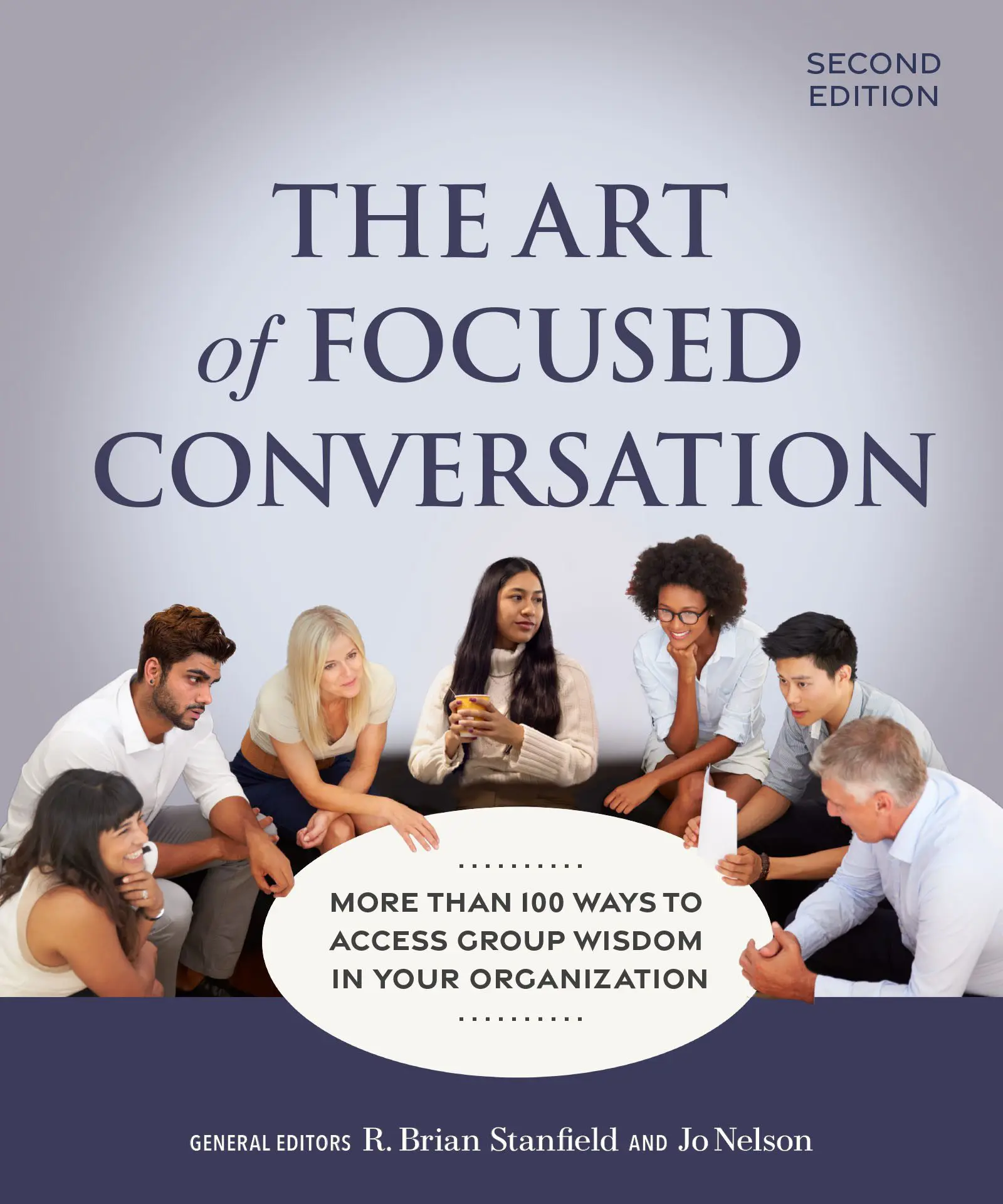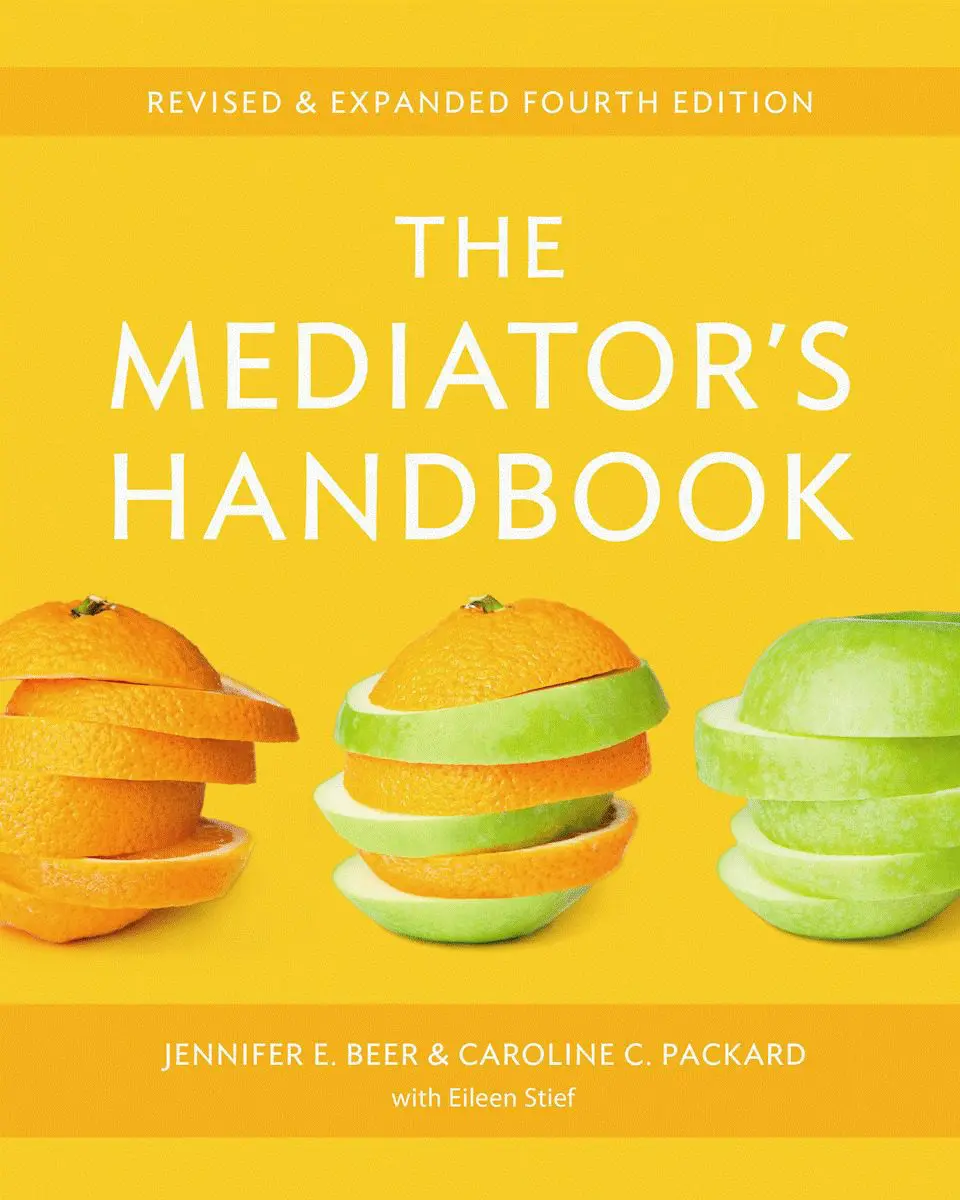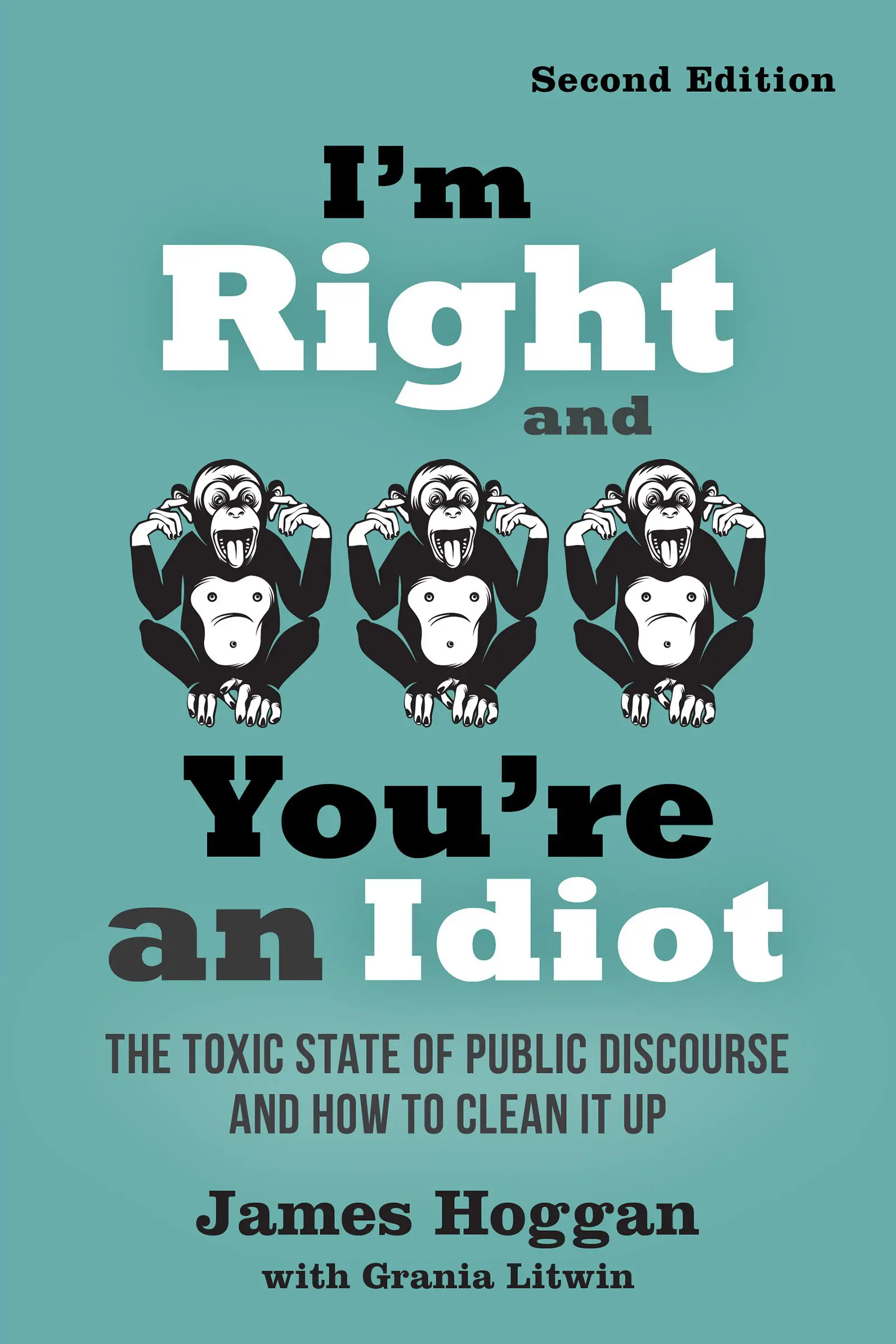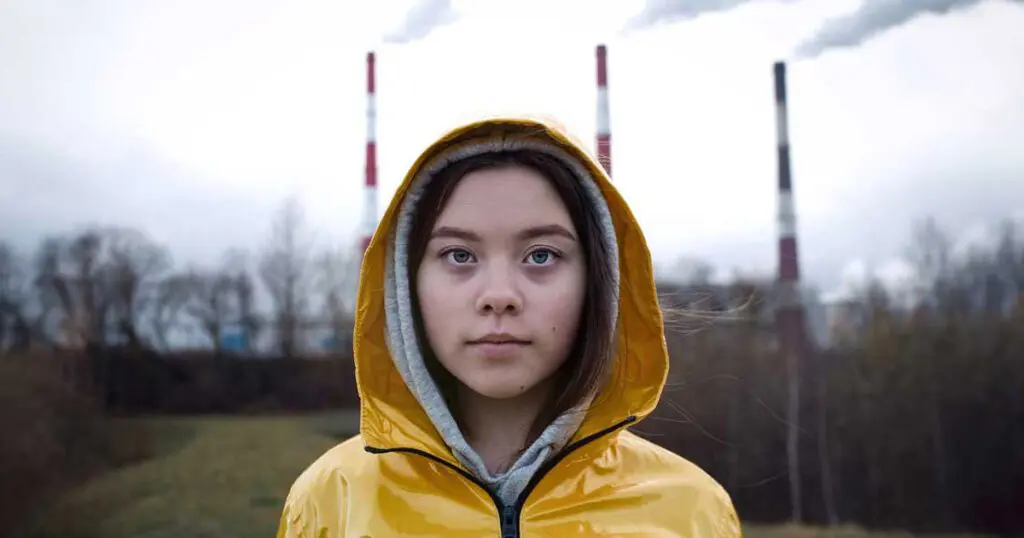
Climate change, like many pressing issues today, sparks a wide array of passionate responses. People often quickly find themselves on opposing sides of the debate. For some, ignoring climate change equates to endangering human survival and the existence of countless other species. For others, the emphasis on climate change feels like an infringement on their lifestyle and personal freedoms. Author of The Art of Focused Conversation, Jo Nelson offers two focused conversations to help participants understand the issue and resolve conflict around climate change.
Conflict happens, sometimes really destructive conflict, which prevents widespread commitment to mitigating the negative effects of climate change.
What Keeps Us Apart?
Wayne Nelson of ICA Associates, Inc., looked at the roots of conflict and came up with six different but related perspectives on what sustains conflict. Perhaps one or more of these describe your experience.
- “I am an Island” – asserting identity by developing own sets of principles and values, which can become rigid
- “Them and Us” – seeing the world as the tension between two opposites, not being able to see more than two sides of any argument
- “Let’s Get Together and Fight” – approaching any interchange over any topic as a debate
- “I Heard What I Said” – pushing our own perspectives and not listening to anything else
- “Who’s Got the Power?” – basing decisions on gaining or manipulating enough power to have our own way
- “We Need to Find a Solution and I’ve Got It” – approaching conversations with answers and positions, rather than questions
Ken Gilbert noted that there are 4 levels of conflict, calling them “Molehill to Mountain,” to emphasize the increasing intensity from bottom to top. The examples below may clarify how these levels help us understand some of the conflict around climate change.
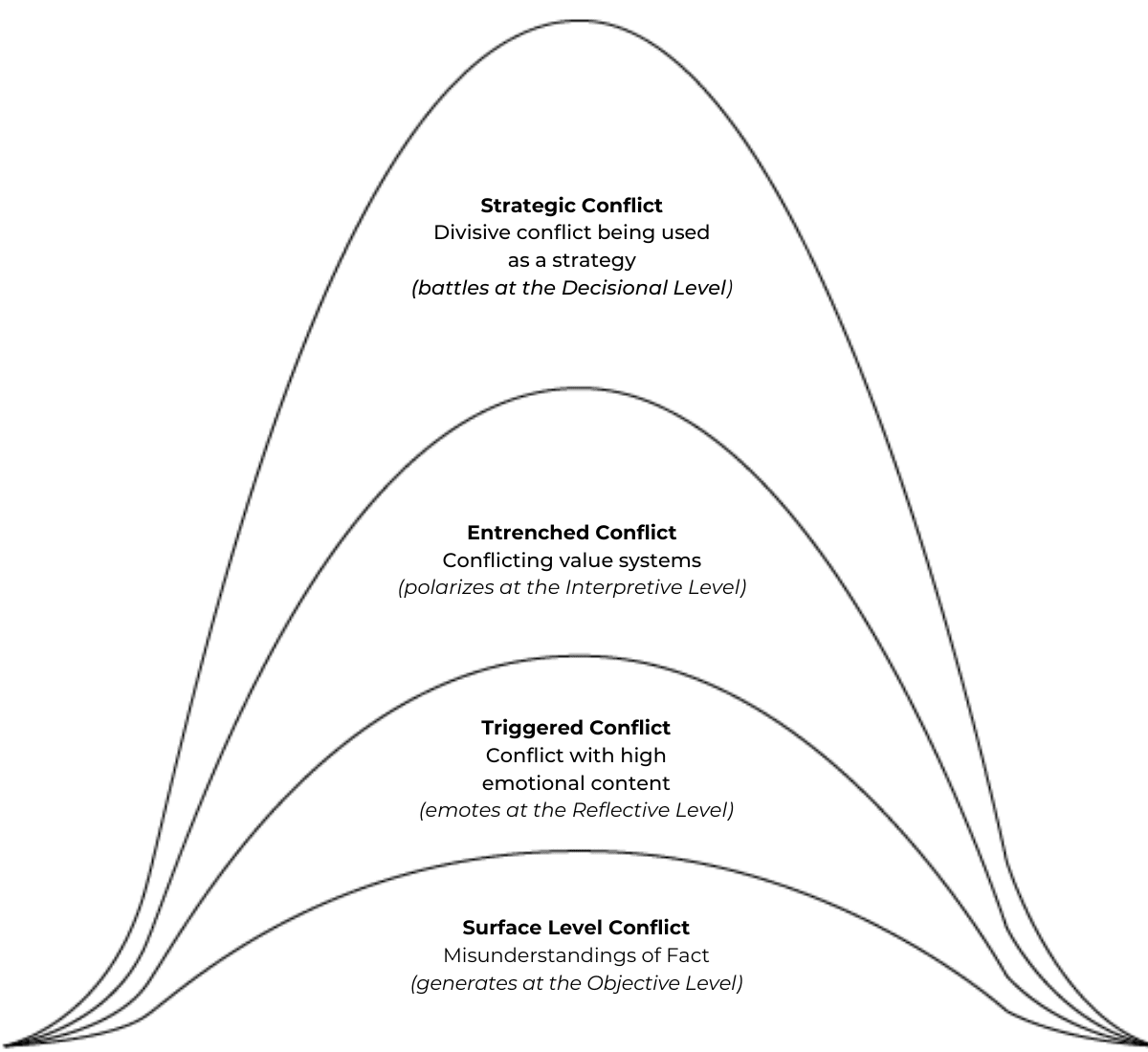
- Surface Level Conflict: Misunderstandings of fact – Example: not understanding the science behind the emission of carbon dioxide into the atmosphere and its effects on climate
- Triggered Emotional Conflict: Conflict with high emotional attachment – example: being afraid of losing my job if oil production is shut down
- Entrenched Conflict: Conflicting value systems – example: conflict between valuing a current lifestyle of consumption and valuing a future that may mean living more frugally
- Strategic Conflict: Using divisive conflict as a strategy – example: creating conflict around the idea of climate change in order to secure political and personal power
Research into a number of approaches to resolving conflict discovered some universal patterns in the steps in the journey towards mutual understanding and action. There is often iteration between these steps, first between the first three, and again between the last three. The fourth step, articulating the root issues, is the catalyst for moving the journey forward.
- Initiating the Dialogue – getting agreement to participate in resolving the conflict
- Clarifying the Situation – getting clear on the facts from all perspectives (addressing the surface level)
- Expressing the Experience – articulating and acknowledging associations and emotional responses to the situation
- Articulating the Substantial Issues – looking for root issues and values beneath the different perspectives
- Generating the Options – brainstorming options to address the substantial issues
- Creating Resolution – building on the options to find solutions that everyone can support
- Planning for Implementation – catalyzing action to work on solutions
Two Focused Conversations that may help for different stages:
Initiating Dialogue to Understand a Conflict (slightly adapted to a climate change issue)

Situation: A facilitator has been asked to mediate an entrenched conflict around climate change. She has scheduled a conversation with each of the principal participants to understand the conflict situation before intervening.
Rational Aim: The participant will have a well-considered and thoughtful understanding of their own perspective on the conflict.
Experiential Aim: Readiness to engage in respectful, productive dialogue with the other “side”
Tangible Beginning Point: A series of events that precipitated the conflict.
Hints: This conversation is based on learnings from Amanda Ripley’s book High Conflict: Why We Get Trapped and How We Get Out. Her examples are very illuminating. In this conversation, active listening, used carefully, is important to help the participant understand their situation and to feel that they have been heard.
Other Applications: This conversation can be used to begin “Initiating the Dialogue”. It may be done with each “side” separately, or it can be done with the whole group.
The Conversation
Opening
We are here today so that I can gain a better understanding of your perspective around climate change. I will ask you a series of questions today to understand each of your experiences and your hopes. At the end of the conversation, I will ask you how your perception of the situation has changed. Do I have your permission to proceed?
Objective Level
- First, tell me the story of what happened… the key points.
- (Tell back the story as active listening… “This is what I heard you say.”)
Reflective Level
- At each key point, what was that experience like for you?
- What associations did each event/action bring up?
- What worries or concerns emerged?
Interpretive Level
- What’s behind this situation for you?
- What is important about that, to you? (follow up with why is that important 1 or 2 times more and then paraphrase: It sounds like xx really matters to you)
- What do you want the other party to this dispute to understand?
- What are some solutions that you might consider?
- What other options might be available?
- What would it be like if you got what you wanted?
Decisional Level
- What do you see differently now about your own view of the situation?
- What do you hope for out of this process?
- What insights might you share with other participants?
Closing
I will be having a similar conversation with other participants in this conflict, before we start to talk together. I look forward to working with you all together.
Resolving a Dispute (slightly adapted to a climate change issue)

Situation: Two organizations have a serious dispute about the details of a plan to mitigate climate change, particularly about who is responsible for what actions.
Rational Aim: A resolution to the problem between the players
Experiential Aim: Understanding of where each other is coming from, and mutual respect. Commitment to the solution.
Tangible Beginning Point : A current dispute about the organization’s plan to mitigate climate change.
Hints: Setting the context for listening respectfully to each other will be important. In this conversation, the question about possible solutions to explore may be a pivot to a second conversation. The first conversation may draw out the issues. The second conversation may use the identified issues to develop solutions. This way the group gains two levels of agreement:
- We agree on the issues “we” are facing (in conversation 1)
- We agree on identifying, evaluating solutions to the issues (in conversation 2).
Other Applications: This can be used with teams or individuals.
The Conversation
Opening
We are meeting today to find a solution to the problem of our dispute about the details of our organization’s plan to mitigate climate change. We are going to work together respectfully to devise a solution we can all live with.
Objective Level
- What are the facts about this situation?
Let’s get data from as many angles as possible, especially from the key people involved.
Reflective Level
- Which part of this situation is confusing?
- Which part is most frustrating?
- Which part of this bothers you the least?
- What other experiences are brought to mind?
Interpretive Level
- What are possible causes of this situation?
- What are the implications of this situation for each entity involved?
- What are the larger implications this might have?
- What is the question that we’re not asking?
- What are possible solutions we might explore?
- What are the pros and cons of each of these solutions?
Decisional Level
- What values do we need to hold in a resolution?
- How might we weave these values together to form a solution?
- Who will write down this solution and read it back to us?
- Is this our decision?
Closing
Thank you very much for your thoughtful participation.
Sources for this post:
- Facilitating Conciliation course developed and taught by ICA Associates, Inc., both live online and in person. https://ica-associates.ca/courses/facilitating-conciliation/
- Two of 8 sample conversations from Section G in The Art of Focused Conversation Second Edition, General Editors R. Brian Stanfield and Jo Nelson, published by New Society Publishers, 2024.
More from the Web
Mastering Facilitation to Navigate a Fractured World with Jo Nelson (Podcast)
Interview with Jo Nelson on Getting to the Bottom of ToP (YouTube)

